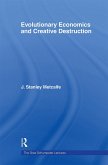Over the years, many books and papers have been produced on cultural- and creative industries with regard to definitions, trends, characteristics, economic value, societal value, crossovers, innovation power, and more. Policy making proved to be experimental in a fragmented and diverse sector. At a European scale, around 7,5% of the working population is employed in the cultural and creative sectors, equaling about 12 million people. In this book different perspectives on cultural and creative industries are taken. A kaleidoscope of insights is presented, varying from international good practices in policy making to regional examples in fashion, new technologies and behavior, and the health sector. Several alternative points of view are discussed as well, including the relation between creative industries and education, behavior, and effective altruism. The book concludes with future perspectives on cultural and creative industries. This is even more relevant at the time of writing with the corona crisis. Cultural and creative industries can play an important role in the transition to a circular economy, the new mainstream after the corona crisis. Despite the uncertainties and changes, one thing is for sure to remain: our economy and society are in need of cultural and creative industries!
Hinweis: Dieser Artikel kann nur an eine deutsche Lieferadresse ausgeliefert werden.
Hinweis: Dieser Artikel kann nur an eine deutsche Lieferadresse ausgeliefert werden.








